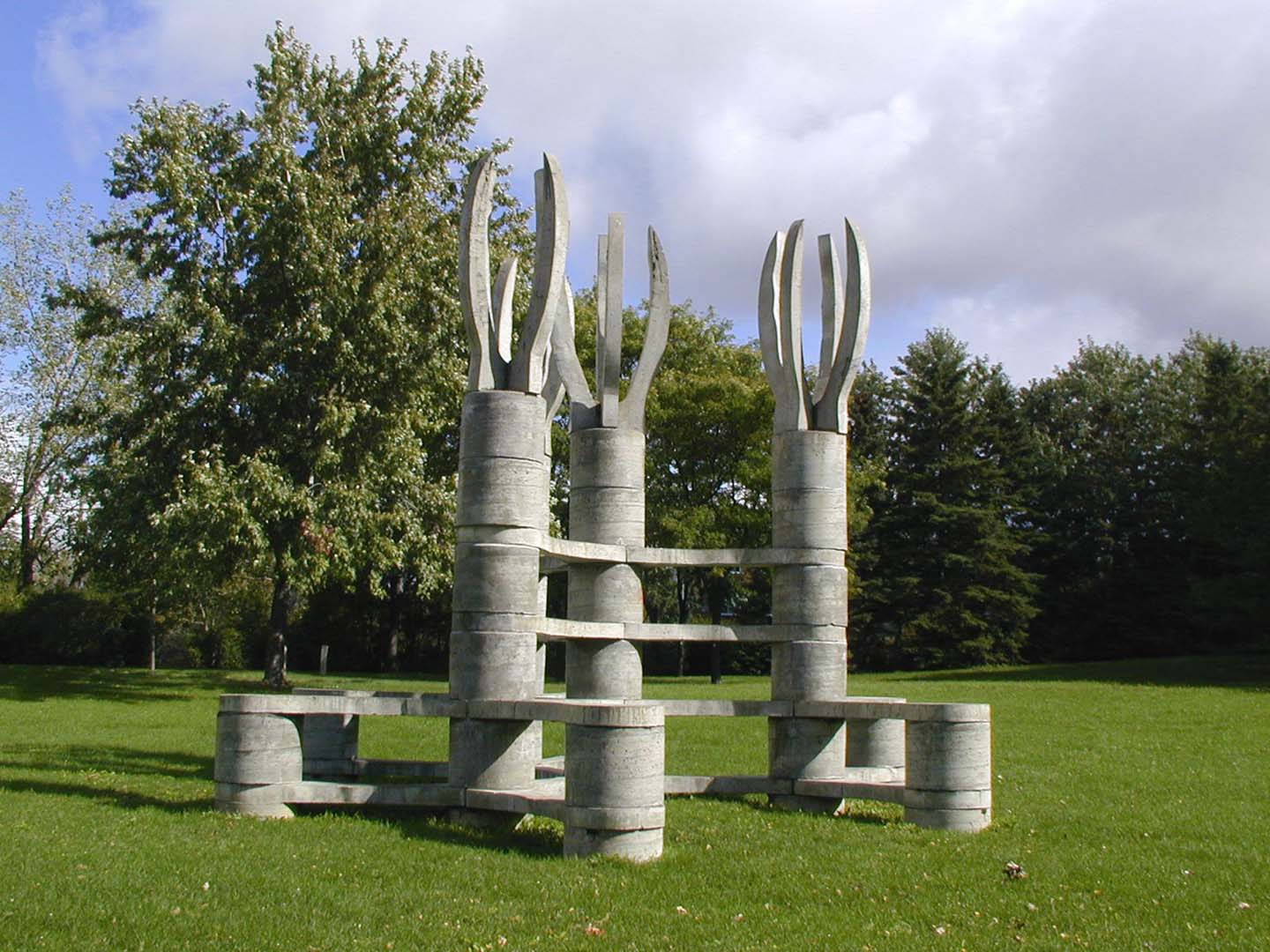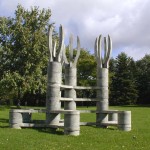

Robert Roussil did a thousand or so odd jobs before enrolling in the Canadian army from 1942 to 1944. When the war was over, he benefited from a scholarship offered by the government to attend the École du Musée des beaux-arts. Professor and director Arthur Lismer encouraged him pursue a career as a sculptor and hired him to teach stone sculpture. In 1949, his wood sculpture La famille showing a naked man and woman was held in custody by the police. This turn of events led Roussil to leave his job.
His frank manner of speaking, his way of speaking, his relationships with militants of the Canadian communist party and the liberty of his artistic production led him to constantly challenge censorship. Roussil defined himself as entrepreneurial artisan, favoring a direct relationship with the client without going through museum – the refusal of artistic institutions. For him, it was essential to live from his art and to make art a way of life. Art must be visible to all and the artist must be anarchistic.
His participation in the 1952 World Peace Council made him realize that he loved the idea of creating international symposiums to allow sculptors to work on very large pieces. He helped found the International Sculpture Symposium in Montreal in 1964. His active participation in the creation of a studio and the Place des Arts is a testament to his interest for action, for the exchange of ideas without any form of censorship.
In 1956, Roussil left Montreal to live in an abandoned windmill in Tourettes-sur-Loup, where he would build a garden of sculptures. His mainly monumental pieces are displayed in public areas in Quebec and in France. We can spot several of them in the city of Montreal at around it. Roussil also built a huge amount of sculptures on the roof of a water treatment plant in Saint-Laurent-Du-Var in France.
- 10 Artworks
- 40min
- Les environs
 L’attente
L’attente 
Artwork description
Standing in a grassy area in Parc Noël-Sud in Saint-Laurent Borough, Lieu (ou Fleur d’hiver) is a monumental modular sculpture – a form that the artist has used frequently since the 1960s. In this sculpture, the artist uses some 60 cylindrical and horizontal elements to form a grouping of columns, four of which are topped with curved stems reminiscent of flower petals.
The title of the work reflects the artist’s desire to imbue the site, to shape it through the presence of art. In Roussil’s view, these “sculptural elements . . . will delineate the space within which users of the park will be able to circulate . . . all year round, including the long winter months.” – Roussil, 1990 1
Through its forms, materials, and monumentality, the sculpture recalls Hommage à René Lévesque, created by Roussil during the same period. The combination of industrial materials and organic silhouettes in both cases provokes a radical transformation of the landscape in which the artwork is presented.
1. Excerpt of an interview conducted in Montréal by Yves Robillard and transcribed into the execution contract.


